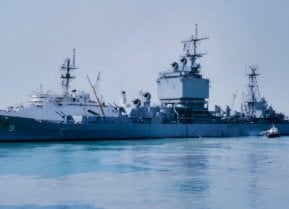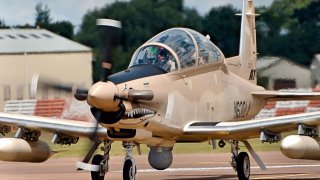U.S. Special Operations Command (SOCOM) Has Decided to Cut the Size of One of its Most Controversial Programs
The Armed Overwatch program, designed to augment special operations forces with a dedicated light attack and surveillance capability, has faced a significant reduction due to budget constraints.
Summary: The Armed Overwatch program, designed to augment special operations forces with a dedicated light attack and surveillance capability, has faced a significant reduction due to budget constraints. L3 Harris Technologies and Air Tractor were awarded the contract for the OA-1K aircraft, yet due to imposed budget limitations, the Special Operations Command (SOCOM) will acquire thirteen fewer aircraft than originally planned, reducing the total from seventy-five to sixty-two by 2027, aiming to save approximately $300 million.
Special Operations Command Adjusts Air Fleet Plans for Future Conflicts
The Armed Overwatch program is designed to provide special operators with an organic light attack aircraft and surveillance capability. After years of competition, L3 Harris Technologies and Air Tractor won the contract for the special operations aircraft with their OA-1K aircraft.
Fewer Special Operations Aircraft
Because of budget limitations imposed by Congress, SOCOM has decided to cut its Armed Overwatch program by 17 percent over five years. In total, the special operations command will purchase thirteen fewer aircraft—sixty-two out of the intended seventy-five. The program cuts will not take place at once but will be complete by 2027. However, SOCOM has expressed a need for seventy-five aircraft.
SOCOM expects to save approximately $300 million from the reduction in aircraft. In December, the Government Accountability Office (GAO) came out with a report suggesting that SOCOM should reconsider its requirement for seventy-five aircraft.
The withdrawal from Afghanistan brought an end to more than twenty years of intense fighting in the Middle East against terrorist groups and insurgents. Although the U.S. military and SOCOM have a presence in the region to combat the so-called Islamic State in Syria, the Global War on Terror (GWOT) is largely over. The Pentagon’s focus is once more fixated on near-peer competition with China and Russia. As such, the Armed Overwatch program isn’t a priority.
The Armed Overwatch Program Makes Sense
Retired Army Gen. Richard Clarke, the former commander of SOCOM and a big proponent of the Armed Overwatch program, has repeatedly gone on the record to explain why the program was a must for both the special operations community and the Air Force.
“This multi-role capability that could provide both intelligence, surveillance, and reconnaissance overhead but also is prepared to fire munitions in support of a team that could be in harm's way. It can be used globally. It could be used in Africa but it can also be used in the Philippines, in Thailand, or wherever we need, or in South America, wherever we need ISR overhead for our troops,” Clarke said in a 2021 House Armed Services Committee hearing.
The rationale is that it would be mighty cheaper for SOCOM to have its own organic close air support and surveillance capability rather than the Air Force using advanced fighter jets like the F-35 Lighting II stealth fighter jet, F-16 Fighting Falcon, or F-15EX Eagle II to do missions that can be done cheaper and maybe better. Each hour of flight for the F-35 Lighting II comes with a price tag of around $40,000. A six-hour mission with a single aircraft would cost the American taxpayer over a quarter of a million dollars.
“The tanker support in the backside, of more than just the aircraft line, but the other aircraft that have to support those aircraft and the significantly larger maintenance tail that goes with that, that our Armed Overwatch requirement specifically narrows and limits the maintenance force,” Clarke said.
About the Author
Stavros Atlamazoglou is a seasoned defense and national security journalist specializing in special operations. A Hellenic Army veteran (national service with the 575th Marine Battalion and Army HQ), he holds a BA from the Johns Hopkins University, an MA from the Johns Hopkins’ School of Advanced International Studies (SAIS). He is pursuing a J.D. at Boston College Law School. His work has been featured in Business Insider, Sandboxx, and SOFREP.
Image Credit: Creative Commons.


